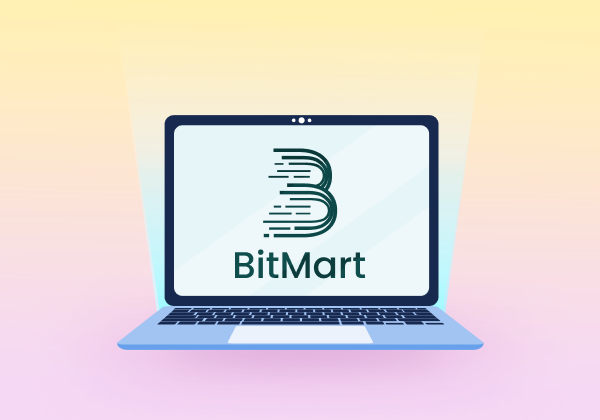
What is Bitcoin, and How Did the First Cryptocurrency Appear?
Bitcoin is the first and most well-known cryptocurrency in the industry. It uses a decentralized protocol, cryptography, and blockchain to enable Peer-to-Peer (P2P) exchange of value in the digital world. However, even though it's the most popular currency nowadays, many crypto enthusiasts still have different misconceptions regarding the Bitcoin invention.
What is actually BTC, and how did Bitcoin come out? Let's take a closer look at it and learn more about the cryptocurrency itself, its history, and the problems BTC can easily solve.
What is Bitcoin?
First, what is meaning of Bitcoin? Bitcoin is a type of digital currency that is independent of the central bank, unlike the traditional fiat currencies with which we are all so familiar. Thousands of user devices spread out all over the world serve as the foundation for controlling the Bitcoin financial system. After installing certain open-source software, anyone can participate in this ecosystem.
Users can send and receive the same-named virtual currency through it. The fact that this currency is uncensorable and that transactions may be completed at any time and from any location is what makes it so attractive.
How Did BTC Appear?
Next, let's address the following question: where do Bitcoins come from?
The actual inventor of the cryptocurrency is unknown. Bitcoin's creator, Satoshi Nakamoto, used a pseudonym, and there is no accurate information available about him or her. Satoshi could be a single person or an organization of programmers somewhere in the world. Even though the name is of Japanese origin, many people assumed that the person in question was either from an English-speaking nation or at least spoke the language well.
Did Satoshi Discover Blockchain Technology?
Bitcoin integrated several technologies that already existed at the time of its first appearance. When Bitcoin first emerged, the idea of a blockchain didn't actually exist. In the early 1990s, Stuart Haber and W. Scott Stornetta proposed a solution to protect digital documents from backdating and forgery, and it was during this time that the idea for such an immutable data structure first evolved. They employed cryptographic techniques, just like modern blockchains do today, to secure data and thwart information forgery.
What Problem Does Bitcoin Solve?
You should understand that the centralized system also has some disadvantages. Trust in a bank or government indicates that they will perform their duties effectively. Unfortunately, this is not always the case. There are numerous instances in history where governments entirely failed to handle their fiscal and economic obligations, which ultimately resulted in hyperinflation and the devaluation of their national currencies. Additionally, there are numerous cases of financial or banking organizations failing to guarantee the protection of money or transaction records.
So what's Bitcoin''s purpose in such a situation? One of the issues is that these institutions have total control and authority over your funds. Cryptocurrencies, on the other hand, are "stored" in non-custodial wallets, and only those who have the secret phrases to the wallets have access to them.
Other BTC's Benefits
In conclusion, let's discuss some of the other benefits of Bitcoin in more detail.
Deflationary Currency
The system is designed to produce a maximum of 21 million BTC, making Bitcoin a deflationary currency. This means that when central banks decide to increase currency printing, BTC doesn't lose its value. While miners won't be rewarded for mining BTC in the future, they'll continue to earn profits from processing transactions.
Lower Prices and Faster Transaction Times
P2P payments result in reduced costs and shorter transaction times. In the world of cryptocurrencies, P2P payments are made directly from User A to User B. In the traditional banking system, payments go through a chain of bank accounts, which makes them more expensive and takes longer to process.
Anonymity
Another additional benefit is anonymity. Initially, this may seem a little odd. While the blockchain or transaction record is entirely public and freely accessible to the public, the identity of any participants is not publicly known. Transactions are linked to unique anonymous crypto wallets, and their owners are unknown unless they decide to de-anonymize themselves.
No Permissions
The use of conventional money and currencies is subject to authorization (from banks, financial institutions, and governments). The use of Bitcoin, in turn, is free and open to everyone throughout the world without needing anyone's permission. It's limitless and has no constraints.
Protection Against Capture
Since they aren't kept by a government agency or business, no one can seize your Bitcoins if you own them. You can serve as your own bank with BTC.
Easy and Quick Use
According to Satoshi Nakamoto's original paper, Bitcoin is a Peer-to-Peer digital currency, therefore transactions are quick and inexpensive – significantly more affordable than centralized payment systems.
Censorship Cannot Stop BTC
A BTC transaction cannot be canceled, just like a wallet or address cannot be blacklisted, which makes Bitcoin resistant to censorship. Every miner and every node have equal rights in the Bitcoin network.
Open Source Software
Everyone can contribute to the development of Bitcoin in a number of ways, including by using various Bitcoin software clients.
► Sabai Academy — a place where studying blockchain, crypto, fractional ownership, and real estate investments becomes a catalyst for capital growth!
Sabai Academy
Smart Reward System exclusive for academy participants!
Related Articles

What Factors Can Reduce the Expected Return on Real Estate Investment?

How to Register on BitMart?

